Gun violence is one of the most devastating and burdensome public health issues in the United States, taking almost 21,000 lives (not even including suicides) in 2021 and having an estimated economic toll of $280 billion annually. These statistics heavily impact Black communities, where homicide is one of the leading causes of death for Black males. Alongside nationwide efforts to reduce violent crime after a 30% increase in murders between 2019 and 2020, further research is needed on the factors that predict violent crime and gun violence in particular.
We are beginning to see the targeting of social factors within high-crime communities become integrated into cities’ public safety initiatives more and more. Mayors in Houston and New York City have implemented police reforms that fund more focused policing alternatives aimed at mental health and other social programming. For example, One Safe Houston funds adding officers to beats in crime hotspots, gun buyback programs, and other reactive policing methods. It also incorporates violence prevention training, mental health support and interventions, and services for survivors of domestic violence.
At the national level, this month, President Biden and his administration proposed a $300 million plan to reduce gun crime and make communities safer. While his plan would fund the hiring of more police officers, it would also divert funding to community-based violence prevention and intervention programs. The Biden administration stated, “Stronger law enforcement is critical in stopping gun crime, but it’s made more effective when we make real investments in making our communities stronger and in addressing the causes of crime before it spills over into violence.” Biden’s plan will invest in proven tactics, including hospital-based interventions, youth programming, after-school activities, job training, stable housing, and more.
An increasing number of studies are examining the relationships between various community distress factors and violent crime, and while this research has influenced violence reduction efforts like those mentioned above, there is still a nationwide impulse to increase police funding and police presence. A national poll found that two out of three voters believe increasing police funding decreases crime. However, this is not entirely true. A 2020 analysis of national police spending and crime trends showed no correlation between police funding and crime rates one way or the other. A University of Pennsylvania criminologist found that increases in police hiring reduced homicides 54% of the time, but crime also went up and down without a direct correlation with police hiring amidst this trend.
Even in cases of increased police spending and correlated crime reduction, municipalities have to weigh the negative effects that accompany adding more police officers, such as increasing arrests for low-level crimes which contribute to mass incarceration and disproportionately affect Black communities. Exposure to the criminal justice system itself can perpetuate underlying issues that contribute to violent crime and recidivism, such as low socioeconomic status and unemployment, homelessness, and poor mental health.
As the director and research fellow of the Center for Justice Research (CJR), we stand amongst numerous institutions and researchers who have examined the link between community distress (including factors like food insecurity and economic opportunity) and violent crime among youth and adults. According to a recent CJR study, social context factors such as insufficient food resources and sleep, residential segregation, and housing cost burdens are correlated with violent crime, as are unemployment, median household income, and population density. However, there are not many patterns found in firearm carrying and usage among groups who share these similar risk factors along with gun access. Future success in preventing firearm violence will require us to understand why youth with similar risk factors for firearm behavior make different choices about acquiring, carrying, and using firearms.
This gap in data speaks to a larger need. Gun violence requires more than just policing to fix it. This is a task CJR has taken on at the county and community level, engaging in research to inform effective interventions and reduce mass incarceration and racial/class-based disparities. While law enforcement has a role to play in violent crime reduction and can, in some cases, benefit the community through evidence-based, targeted policing, more is needed to address this problem, and those most affected need to be a part of the solution. Social services and community-based organizations can aid in addressing the underlying factors contributing to violent crime.
One of the most evident social factors correlated with violent crime is mental health. An estimated 20% of police calls are for mental health and substance use crises. Furthermore, CJR found that at the community level, violent crime is correlated with mental health, such that poor mental health levels further exacerbate crime in a community. Research suggests that violent and nonviolent offenders benefit from intervention efforts aimed at addressing social factors, including mental health, to reduce initial crime and recidivism. Greater access to mental health healthcare providers in office settings and other therapy and substance abuse treatment programs can help to lessen crime rates.
CJR found unemployment to be another highly correlated social factor for both violent and property crime. Black communities have historically experienced disproportionately worse unemployment rates compared to White communities, and the COVID-19 pandemic only widened this employment gap. Unemployment, along with other factors rooted in centuries of racist policies, like mass incarceration, has contributed to gun violence’s disproportional impact on communities of color via class-related issues.
The way police interact with civilians can also affect violent crime and the success of violent crime reduction initiatives. Stop-and-frisk practices take a mental health toll on communities of color, and police stops in general cause youth psychological distress. Thus, while in some cases, policing can affect crime reduction, over-policing can increase community stress and diminish mental health. Research indicates that police intervention works best in reducing crime when deploying more focused intervention methods, but investigative stops based on the suspicion of crime do not play a driving role in reducing crime rates. Over-policing without focused intervention tactics ignores the true needs of a community.
With that said, further exploration of community-based, non-punitive measures, particularly those that do not run through law enforcement channels, is needed to address the complex, multi-dimensional problem of crime reduction and public safety. While the Biden administration’s proposal is hopeful, it can only be impactful if it find its way through Senate approval with substantial funding diverted to the social factors and needs of the community rather than to traditional, get-tough policing.
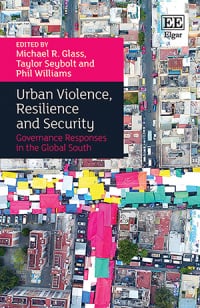
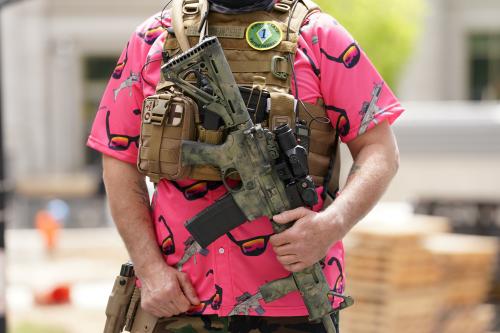
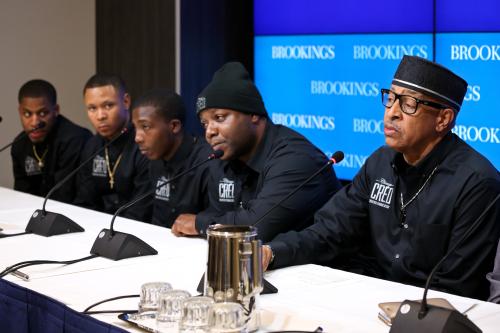
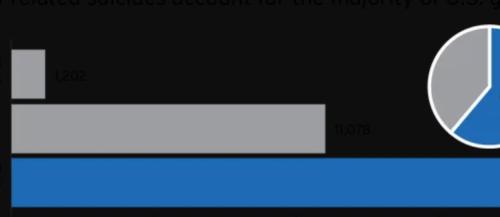


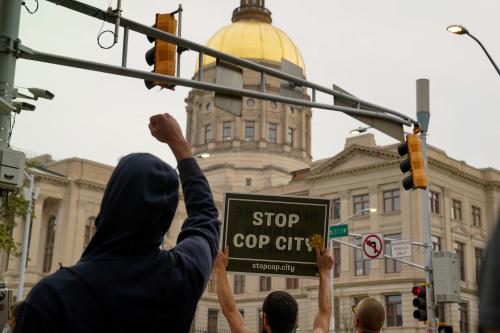
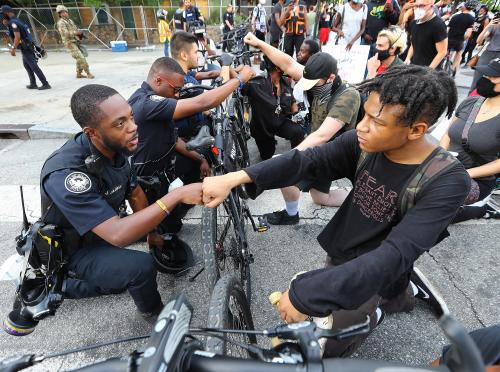
Commentary
Preventing gun violence takes more than police
March 31, 2022